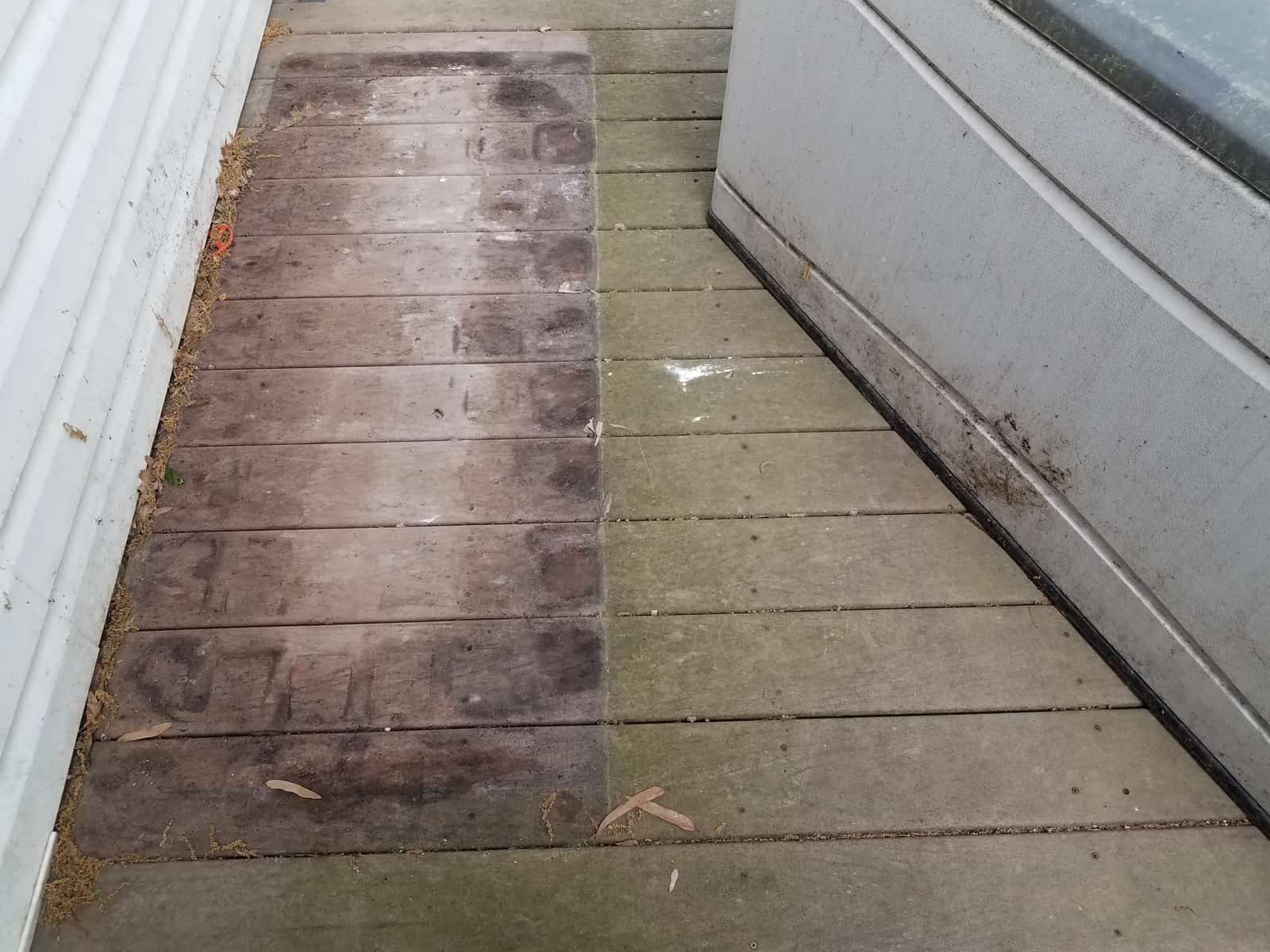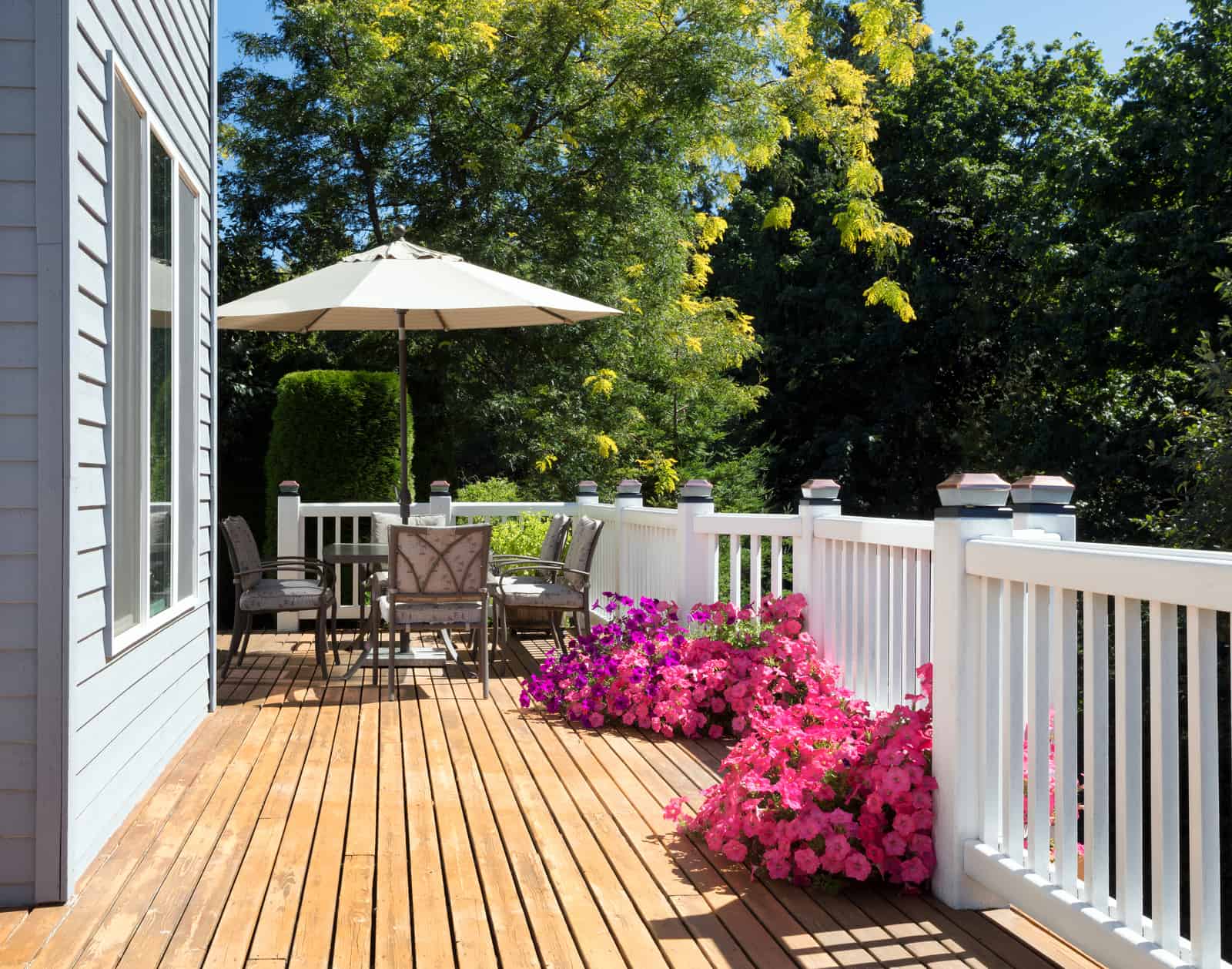Your deck has been a beloved part of your outdoor living space for years, providing a place for relaxation, gatherings, and countless memories. However, just like any other structure, decks age and experience wear and tear over time. Knowing when it’s time for a deck replacement is essential to ensure the safety, functionality, and aesthetics of your outdoor area. In this article, we’ll discuss the signs to watch for that indicate it might be time to consider a deck replacement.
1. Structural Instability:
One of the most critical factors to consider when determining if your deck needs replacement is its structural integrity. If you notice signs of sagging, warping, or wobbling when walking on the deck, these could indicate underlying structural issues. A deck that no longer feels solid underfoot is a clear indication that it may be unsafe and in need of replacement.
Are the footers (concrete supports in the ground) in good condition? Any erosion around those footings? Are support posts straight and in good condition? Are the joists (horizontal pieces underneath the top decking) intact? If any of these are not up to par, the structure of your deck may be at risk.
2. Rot and Decay:
Decks are constantly exposed to the elements, and over time, this exposure can lead to wood rot and decay. If you notice soft spots, crumbling wood, or areas that are prone to splintering, these are signs of deterioration. Rotting wood compromises the overall strength of the deck, and replacing such decayed portions is essential to maintain safety.
If your deck hasn’t been re-stained or painted in a number of years, it is more susceptible to damage from the elements. Rot and other damage can occur more easily, and it may be necessary to replace the wood if too much damage has taken place.
3. Loose or Corroded Fasteners:
The hardware that holds your deck together, such as nails, screws, and bolts, can rust, corrode, or become loose over time. If you’re finding rust stains on the surface of your deck, or if fasteners are coming out or no longer holding securely, it’s a sign that the structural integrity of the deck might be compromised.
4. Warping and Uneven Boards:
Weather exposure can cause deck boards to warp, cup, or twist. While some minor warping might be manageable with repairs, excessive warping across the deck’s surface can create an uneven and hazardous walking surface. Not only does this impact the deck’s aesthetics, but it also poses a tripping hazard.
5. Pervasive Mold, Mildew and Algae:

Moisture and damp conditions can lead to the growth of mold and mildew and algae on your deck. While some cleaning and maintenance can address small patches, extensive and recurring mold growth may be an indication of deeper problems. If mold and mildew are consistently present, it could signal that the deck’s structure is retaining moisture, which can lead to more significant issues over time.
6. Significant Fading and Discoloration:
Decking materials that have faded significantly or changed color due to sun exposure and weathering can indicate that the wood is deteriorating. Fading not only affects the deck’s appearance but also suggests that the material’s structural integrity is compromised, making it more susceptible to other forms of damage.
7. Splintering and Cracking:
Splinters and cracks in the wood not only make your deck uncomfortable to walk on, but they’re also signs of wear and tear that has reached an advanced stage. These cracks can collect water, accelerating the decay process and posing a safety risk to those who use the deck.
8. Repetitive Maintenance Needs:
While regular maintenance is essential to prolong the life of your deck, if you find yourself constantly repairing or replacing boards, it might be a sign that the deck has reached the end of its serviceable life. Repetitive maintenance costs can add up, making a replacement a more cost-effective and practical choice in the long run.
9. Outdated Design and Functionality:
Beyond structural concerns, the design and functionality of your deck also play a significant role. If your deck’s layout no longer suits your needs, or if it lacks features you desire (such as seating areas, shade structures, or built-in planters), a replacement project can not only address safety issues but also revitalize your outdoor space.

Be Safe and Watch Your Deck Carefully
Keeping a watchful eye on your deck’s condition is crucial to ensure the safety of your family and guests. The signs mentioned above—structural instability, wood rot, loose fasteners, warping, mold growth, fading, splintering, repetitive maintenance, and outdated design—can help you determine whether it’s time for a deck replacement. Replacing an aging or compromised deck not only enhances the aesthetics of your outdoor space but also guarantees a safe and enjoyable environment for all who use it.
Remember, a well-maintained and safe deck adds value to your property and enriches your outdoor living experience for years to come.
Not sure if your deck needs a little bit of maintenance or a full-blown replacement? Get a free deck evaluation today from Halcyon Remodeling. We’ll be able to quickly assess any damage or threatening condition and let you know a simple solution. Many times, a simple repair can solve your deck’s problem. If a deck replacement is required,
